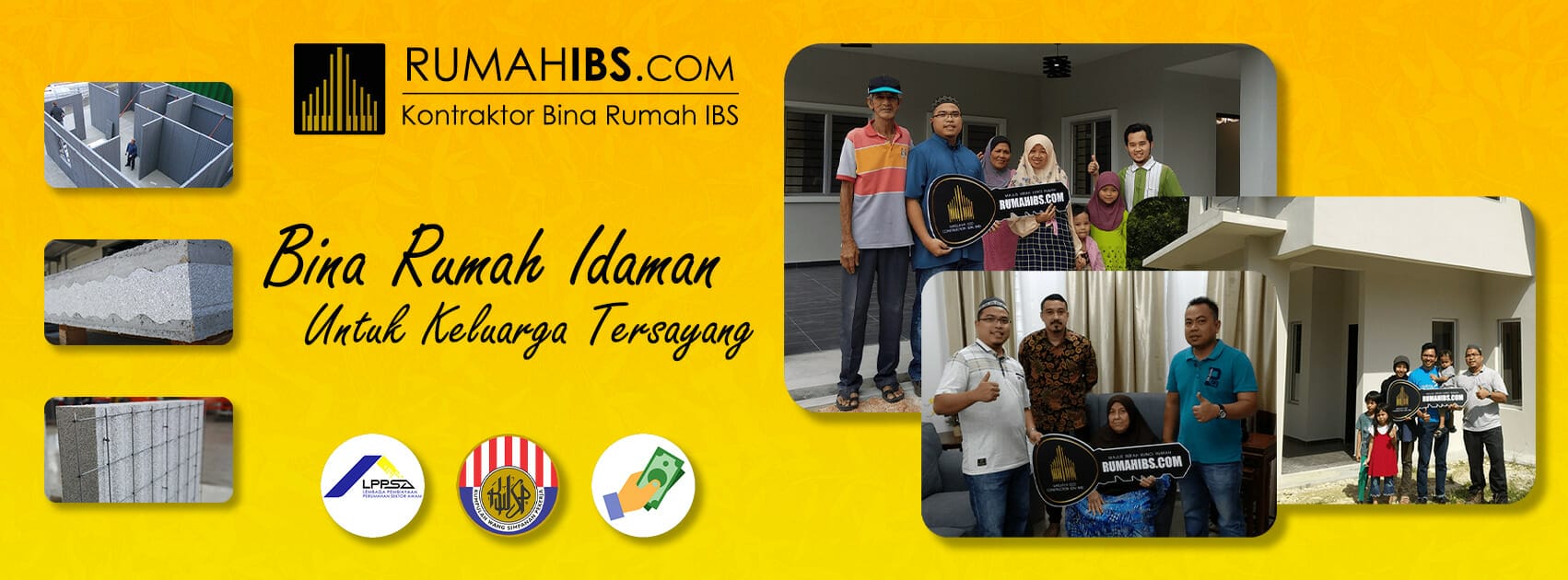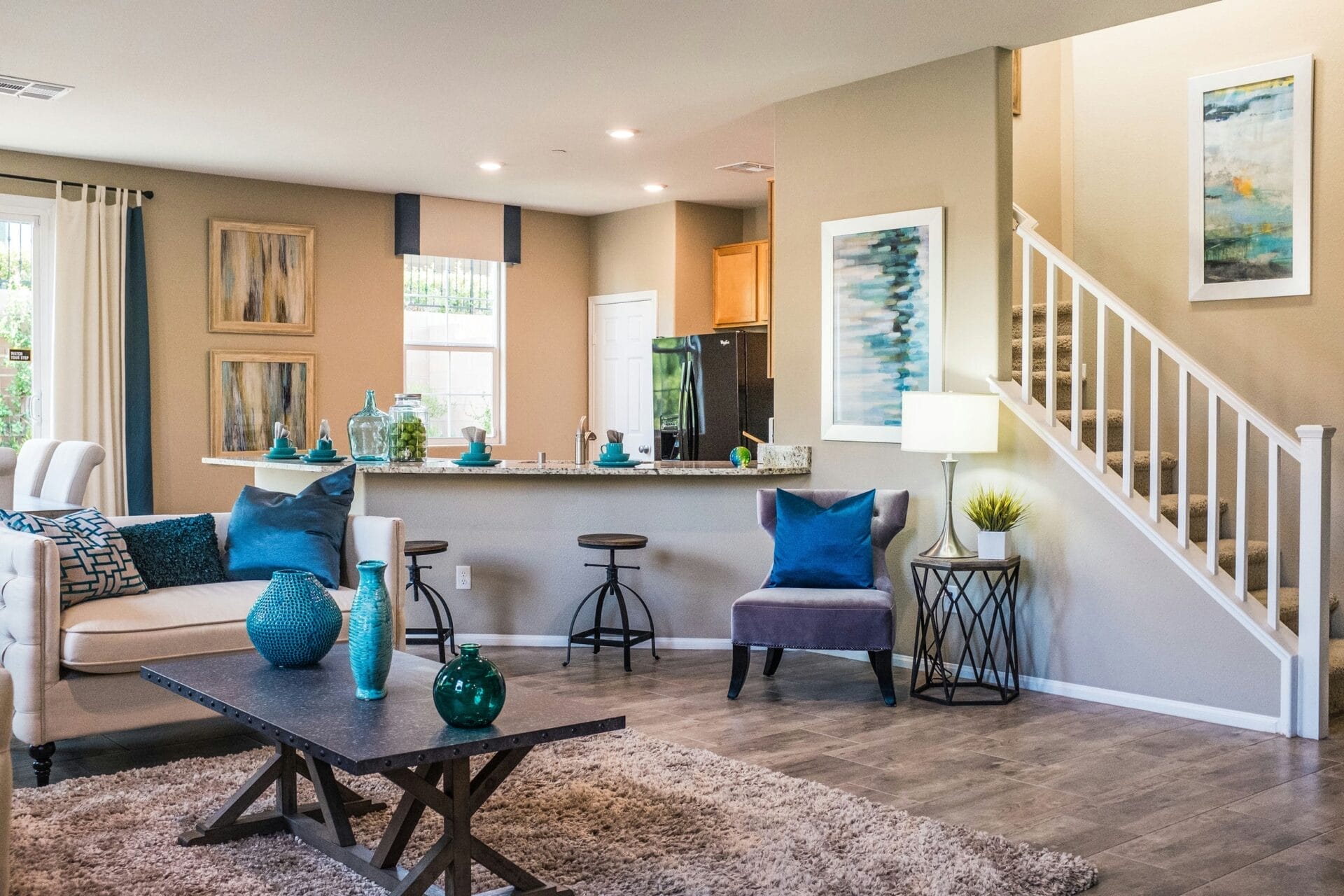Navigating the Landscape of Home Construction Costs in 2024: A Comprehensive Guide
1. Introduction
In 2024, the landscape of home construction in Malaysia is both promising and challenging. As we embark on another year, it’s crucial for homeowners, developers, and contractors alike to navigate the intricacies of construction costs with finesse and foresight. Whether you’re dreaming of building your own cozy abode or planning a large-scale residential development project, understanding the nuances of construction expenses is paramount to success.
Embracing the Construction Journey
Embarking on a construction journey is akin to setting sail on an adventure. It’s filled with anticipation, excitement, and perhaps a hint of trepidation. Yet, armed with the right knowledge and resources, this voyage can be a rewarding one.
The Importance of Cost Management
Cost management lies at the heart of every successful construction endeavor. From the inception of a project to its completion, prudent financial planning ensures that resources are allocated wisely and efficiently. Whether you’re a seasoned developer or a first-time homeowner, understanding the intricacies of construction expenses empowers you to make informed decisions and steer your project towards fruition.
Setting the Stage for Success
As we delve deeper into the realm of home construction costs in Malaysia, it’s essential to set the stage for success. Throughout this article, we’ll explore the various factors that influence construction expenses, from labor rates and material prices to regulatory requirements and market trends. Together, let’s unravel the mysteries of construction costs and equip ourselves with the knowledge to thrive in the ever-evolving landscape of residential development.
| Key Points | Highlights |
|---|---|
| Importance of cost management in construction projects | Emphasizes the significance of prudent financial planning and resource allocation for successful construction projects |
| Setting the stage for success in home construction | Encourages readers to embark on the construction journey with confidence and preparedness |
| Exploring the factors influencing construction expenses | Introduces the various factors, such as labor rates, material prices, and regulatory requirements, impacting costs |

chastity cortijo 0qS1KQNyEX8 unsplash
2. Understanding Home Construction Costs
Embarking on a journey to build your dream home or develop a residential project is an exciting endeavor. However, before breaking ground, it’s essential to grasp the intricacies of home construction costs in Malaysia. From labor expenses to material prices and regulatory fees, understanding the components that contribute to overall expenses is vital for effective budgeting and project management.
Delving into Construction Expenses
When it comes to home construction costs, there’s more than meets the eye. Beyond the visible aspects of building materials and labor, several underlying factors influence the overall expenses of a construction project. These include:
- Labor Costs: The wages of skilled workers, such as carpenters, masons, and electricians, contribute significantly to construction expenses. In Malaysia, labor rates can vary based on factors such as location, demand, and skill level.
- Material Prices: The cost of building materials, ranging from cement and steel to tiles and paint, directly impacts construction expenses. Fluctuations in material prices, influenced by market demand, supply chain disruptions, and currency fluctuations, can affect project budgets.
- Land Acquisition: Securing suitable land for construction is a crucial aspect of any development project. The price of land in Malaysia varies depending on factors such as location, accessibility, and proximity to amenities. Additionally, regulatory fees, such as land conversion and development charges, add to land acquisition costs.
- Regulatory Requirements: Compliance with local building codes, permits, and regulations is essential for any construction project. Failure to adhere to regulatory requirements can lead to delays, fines, or even project halts. Understanding and budgeting for regulatory fees and approvals are integral to managing construction expenses.
The Role of Market Dynamics
In addition to these core components, market dynamics play a significant role in shaping home construction costs. Economic factors, such as inflation rates, interest rates, and market demand, can influence the overall cost of construction. For instance, during periods of high demand or inflation, construction materials and labor may experience price hikes, impacting project budgets.
Navigating Construction Costs Wisely
To navigate home construction costs effectively, it’s essential to adopt a proactive approach. Conducting thorough research, obtaining multiple quotes from contractors and suppliers, and seeking cost-saving alternatives can help mitigate expenses. Moreover, leveraging technology, such as construction management software and project planning tools, can streamline processes and enhance cost efficiency.
| Factors Influencing Construction Costs | Description |
|---|---|
| Labor Costs | Includes wages of skilled workers like carpenters and electricians, influenced by factors such as location, demand, and skill level |
| Material Prices | Encompasses the cost of building materials like cement, steel, and tiles, subject to fluctuations due to market demand and supply dynamics |
| Land Acquisition | Involves the purchase of land for construction, with costs influenced by location, accessibility, and regulatory fees |
| Regulatory Requirements | Encompasses compliance with local building codes, permits, and regulations, essential for obtaining approvals and avoiding penalties |
| Market Dynamics | Includes economic factors like inflation rates, interest rates, and market demand, impacting overall construction costs |
3. Analyzing Regional Variances: Focus on Selangor
When it comes to home construction in Malaysia, understanding regional variances is key to accurate budgeting and planning. Selangor, as one of the most populous and economically vibrant states in the country, presents unique challenges and opportunities for construction projects. Let’s delve into the factors that influence construction costs in Selangor and how they differ from other regions.
Economic Landscape of Selangor
Selangor boasts a thriving economy, driven by industries such as manufacturing, commerce, and services. The state’s strategic location, robust infrastructure, and skilled workforce make it an attractive destination for investment and development. However, rapid urbanization and population growth have also led to increased competition for resources and higher construction costs.
Impact on Land Prices
One of the primary factors influencing construction costs in Selangor is land prices. As urban areas expand and demand for residential and commercial spaces rises, the cost of land escalates accordingly. Prime locations in Selangor, such as Petaling Jaya, Shah Alam, and Subang Jaya, command premium prices, driving up overall construction expenses.
Availability of Skilled Labor
Another consideration for construction projects in Selangor is the availability of skilled labor. While the state benefits from a sizable workforce, the demand for skilled construction workers often outpaces supply. As a result, contractors may need to offer higher wages or employ workers from other regions, adding to labor costs.
Regulatory Framework
Navigating the regulatory framework in Selangor is essential for construction projects. Local building codes, zoning regulations, and permit requirements can vary from other states, requiring developers and contractors to familiarize themselves with Selangor’s specific rules and procedures. Failure to comply with these regulations can lead to delays and additional expenses.
Strategic Planning for Success
Despite the challenges posed by regional variances, construction projects in Selangor can be successful with strategic planning and foresight. Conducting thorough market research, partnering with experienced local contractors, and leveraging technology for project management can help mitigate construction costs and ensure project delivery on time and within budget.
| Factors Influencing Construction Costs in Selangor | Description |
|---|---|
| Economic Landscape | Overview of Selangor’s thriving economy and its impact on construction costs |
| Impact on Land Prices | Discussion on how land prices in prime locations drive up overall construction expenses in Selangor |
| Availability of Skilled Labor | Analysis of the demand-supply dynamics of skilled construction workers in Selangor and its impact on labor costs |
| Regulatory Framework | Examination of the specific building codes, regulations, and permit requirements in Selangor and their implications |
| Strategic Planning for Success | Strategies for mitigating construction costs and ensuring project success in Selangor through careful planning |

charlota blunarova vSDdtWQhkS0 unsplash
4. Cost Optimization Strategies
Embarking on a home construction project in Malaysia entails meticulous planning and budgeting to ensure that expenses are kept in check without compromising on quality. To navigate the challenges of construction costs, it’s imperative to adopt cost optimization strategies that maximize efficiency and minimize unnecessary expenditures. Let’s explore some practical approaches to optimize costs and streamline your construction project.
Prioritize Essential Features
When planning your home construction project, it’s essential to prioritize essential features that align with your needs and budget. Identify must-have elements such as the number of bedrooms, layout design, and essential amenities. By focusing on the essentials and avoiding unnecessary embellishments, you can allocate resources more efficiently and prevent cost overruns.
Seek Competitive Bids
Obtaining multiple quotes from contractors and suppliers is a crucial step in cost optimization. Reach out to reputable contractors and request detailed cost estimates for your project. Compare quotes based on factors such as pricing, timeline, and reputation. By soliciting competitive bids, you can negotiate favorable rates and ensure that you’re getting the best value for your money.
Explore Alternative Materials and Methods
Innovative construction materials and methods offer opportunities for cost savings without compromising quality. Consider incorporating sustainable and cost-effective materials such as recycled concrete, bamboo, or precast concrete panels. Additionally, explore alternative construction methods such as prefabrication and modular construction, which can reduce labor costs and construction time.
Embrace Technology
In the digital age, technology plays a pivotal role in construction project management and cost optimization. Invest in construction management software that enables you to track project expenses, manage schedules, and communicate effectively with stakeholders. Utilize Building Information Modeling (BIM) software to streamline the design and coordination process, minimizing errors and rework.
Implement Lean Construction Practices
Lean construction principles emphasize efficiency, waste reduction, and continuous improvement throughout the construction process. Adopting lean practices such as just-in-time inventory management, value engineering, and collaborative project delivery can help minimize construction costs while maximizing productivity and quality.
Monitor Expenses Closely
Throughout the construction process, closely monitor expenses and track progress against your budget. Regularly review financial reports, project milestones, and expenditure forecasts to identify any deviations from the plan. Addressing potential cost overruns promptly allows you to take corrective action and prevent financial setbacks.
Engage in Value Engineering
Value engineering involves analyzing project components to identify opportunities for cost savings without sacrificing functionality or performance. Collaborate with architects, engineers, and contractors to explore alternative design solutions, materials, or construction methods that offer comparable benefits at a lower cost.
Conclusion
By implementing cost optimization strategies at every stage of your home construction project, you can achieve your desired outcomes within budgetary constraints. From prioritizing essential features and seeking competitive bids to embracing technology and value engineering, proactive planning and prudent decision-making are key to success in construction cost management.
| Cost Optimization Strategies | Description |
|---|---|
| Prioritize Essential Features | Focus on must-have elements to allocate resources efficiently and prevent cost overruns |
| Seek Competitive Bids | Obtain multiple quotes from contractors to negotiate favorable rates and ensure the best value for money |
| Explore Alternative Materials and Methods | Incorporate sustainable materials and innovative construction methods to reduce costs and enhance efficiency |
| Embrace Technology | Invest in construction management software and BIM tools to streamline project management and communication |
| Implement Lean Construction Practices | Adopt lean principles to minimize waste, improve productivity, and optimize construction processes |
| Monitor Expenses Closely | Track project expenses closely and address potential cost overruns promptly to prevent financial setbacks |
| Engage in Value Engineering | Collaborate with stakeholders to identify cost-saving opportunities through alternative design solutions and methods |
5. Budgeting for Home Construction Projects
Planning and budgeting are crucial steps in the journey of building your dream home in Malaysia. Without a well-thought-out budget, home construction projects can quickly spiral out of control, leading to financial strain and delays. In this section, we’ll explore effective strategies for budgeting your construction project to ensure that you stay on track and achieve your desired outcomes within financial constraints.
Assessing Your Financial Capacity
Before diving into the details of budgeting, it’s essential to assess your financial capacity and establish a realistic budget for your construction project. Consider factors such as your savings, available financing options, and anticipated costs. Determine how much you can comfortably afford to invest in your home construction while still meeting your other financial obligations.
Creating a Detailed Cost Estimate
Once you have a clear understanding of your financial capacity, it’s time to create a detailed cost estimate for your construction project. Break down the expenses into categories such as labor costs, material prices, land acquisition, and regulatory fees. Research current market rates, obtain quotes from contractors and suppliers, and factor in any contingency funds for unforeseen expenses.
Setting Aside Contingency Funds
In addition to your primary budget, it’s crucial to set aside contingency funds to account for unexpected costs or changes during the construction process. A common rule of thumb is to allocate around 10% to 20% of your total project budget for contingencies. Having this buffer ensures that you’re prepared for any surprises that may arise without derailing your project financially.
Prioritizing Project Phases
If you’re working with a limited budget, consider prioritizing project phases based on your immediate needs and financial constraints. Focus on completing essential structural elements and functional spaces first, such as foundations, walls, and utilities. You can always incorporate additional features and amenities in later phases as your budget allows.
Monitoring and Adjusting Your Budget
Throughout the construction process, it’s essential to monitor your budget closely and make adjustments as needed. Keep track of expenses, compare actual costs against your estimates, and identify any deviations or areas where costs can be optimized. Being proactive in managing your budget allows you to address potential issues early and prevent budget overruns.
Conclusion
Budgeting for a home construction project requires careful planning, research, and foresight. By assessing your financial capacity, creating a detailed cost estimate, setting aside contingency funds, prioritizing project phases, and monitoring your budget closely, you can navigate the construction process with confidence and ensure that your dream home becomes a reality within your financial means.
| Budgeting Strategies for Home Construction | Description |
|---|---|
| Assessing Your Financial Capacity | Determine your financial capabilities and establish a realistic budget for your construction project |
| Creating a Detailed Cost Estimate | Break down expenses, research market rates, and obtain quotes to create a comprehensive cost estimate for your project |
| Setting Aside Contingency Funds | Allocate contingency funds to account for unexpected costs or changes during the construction process |
| Prioritizing Project Phases | Focus on completing essential structural elements and functional spaces first, then incorporate additional features later |
| Monitoring and Adjusting Your Budget | Keep track of expenses, compare actual costs against estimates, and make adjustments to prevent budget overruns |

charles loyer QN6fCROYdWM unsplash
6. Exploring Alternative Construction Methods
When it comes to home construction in Malaysia, exploring alternative methods can offer cost-effective and sustainable solutions. Traditional construction techniques, while prevalent, may not always be the most efficient or environmentally friendly. In this section, we’ll delve into alternative construction methods that prioritize efficiency, sustainability, and cost savings.
Prefabrication and Modular Construction
Prefabrication involves manufacturing building components off-site in a controlled environment before assembling them on-site. Similarly, modular construction entails constructing modules or sections of a building off-site and then transporting and assembling them on-site. These methods reduce construction time, minimize waste, and enhance quality control, ultimately leading to cost savings.
Industrialized Building Systems (IBS)
Industrialized Building Systems (IBS) leverage standardized and prefabricated components to streamline the construction process. By prefabricating elements such as walls, floors, and roofs in a factory setting, IBS reduces construction time, labor costs, and material wastage. Additionally, IBS offers greater consistency and quality control, resulting in structurally sound and durable buildings.
Green Building Technologies
Green building technologies focus on sustainability and energy efficiency, minimizing environmental impact while reducing long-term operating costs. Features such as solar panels, rainwater harvesting systems, and passive cooling techniques can significantly lower energy consumption and utility bills. Incorporating green building technologies not only benefits the environment but also enhances the value and appeal of a property.
Adaptive Reuse and Renovation
Instead of embarking on new construction projects, consider adaptive reuse and renovation of existing structures. Adaptive reuse involves repurposing old buildings for new functions, such as converting warehouses into loft apartments or factories into office spaces. Renovation projects focus on upgrading and modernizing existing buildings to meet current standards and preferences. These approaches often require less material and labor compared to new construction, resulting in cost savings.
Conclusion
Exploring alternative construction methods offers numerous benefits for home construction projects in Malaysia. Whether it’s prefabrication and modular construction for efficiency, IBS for quality control, green building technologies for sustainability, or adaptive reuse and renovation for cost savings, embracing innovative approaches can lead to successful and environmentally conscious developments.
| Alternative Construction Methods | Description |
|---|---|
| Prefabrication and Modular Construction | Manufacturing building components off-site and assembling them on-site to reduce construction time, waste, and enhance quality control |
| Industrialized Building Systems (IBS) | Standardized and prefabricated components streamline construction, lower labor costs, and improve consistency and quality control |
| Green Building Technologies | Sustainable features such as solar panels and rainwater harvesting systems minimize environmental impact and reduce long-term operating costs |
| Adaptive Reuse and Renovation | Repurposing existing structures and upgrading old buildings offer cost-effective alternatives to new construction projects |
7. Navigating Pricing Trends: 2024 Insights
As we step into 2024, it’s crucial for stakeholders in the construction industry to stay abreast of the latest pricing trends. From construction materials and labor costs to land prices and regulatory fees, understanding how these factors evolve can significantly impact the feasibility and profitability of home construction projects in Malaysia. Let’s dive into the pricing trends shaping the construction landscape in 2024 and beyond.
Fluctuations in Material Prices
The prices of construction materials are subject to fluctuations influenced by various factors such as supply chain disruptions, market demand, and global economic conditions. In 2024, we’ve observed volatility in material prices, particularly for essentials like cement, steel, and lumber. Supply chain disruptions, exacerbated by global events such as the COVID-19 pandemic, have led to shortages and price hikes, impacting construction budgets.
Dynamics of Labor Costs
Labor costs constitute a significant portion of construction expenses and are influenced by factors such as wage rates, availability of skilled workers, and labor market conditions. In 2024, we’ve witnessed fluctuations in labor costs driven by supply-demand imbalances and regulatory changes. Skilled trades in high demand, such as electricians and plumbers, have seen wage increases, adding pressure to construction budgets.
Land Prices and Regulatory Fees
The cost of land and regulatory fees play a crucial role in construction projects, particularly in densely populated areas like Malaysia. In 2024, land prices have continued to rise, driven by urbanization, population growth, and infrastructure development. Additionally, navigating regulatory requirements and obtaining permits can add significant costs and delays to construction projects.
Adapting to Market Dynamics
To navigate pricing trends in 2024, stakeholders must adopt proactive strategies to manage costs effectively. This includes conducting thorough market research, diversifying suppliers, and negotiating favorable contracts. Embracing sustainable practices and innovative construction methods can also help mitigate construction expenses while enhancing project resilience and sustainability.
Conclusion
As we navigate the pricing trends of 2024, it’s essential for stakeholders in the construction industry to remain vigilant and adaptable. By staying informed about fluctuations in material prices, labor costs, land prices, and regulatory fees, and adopting proactive strategies to manage costs, stakeholders can navigate the construction landscape with confidence and resilience.
| 2024 Pricing Trends in Construction | Insights |
|---|---|
| Fluctuations in Material Prices | Volatility in prices of construction materials due to supply chain disruptions and global economic conditions |
| Dynamics of Labor Costs | Fluctuations in labor costs driven by supply-demand imbalances and regulatory changes |
| Land Prices and Regulatory Fees | Rising land prices and regulatory fees impacting construction budgets in densely populated areas like Malaysia |
| Adapting to Market Dynamics | Proactive strategies such as market research, supplier diversification, and sustainable practices to manage costs |

ceyda ciftci nnBpFpGvJAU unsplash
8. Conclusion: Planning for Success in Home Construction
As we draw near to the conclusion of our exploration into the realm of home construction in Malaysia, it’s imperative to reflect on the insights gained and chart a course for success in future endeavors. From understanding the intricacies of construction costs to exploring alternative methods and navigating pricing trends, the journey of home construction is a multifaceted one, requiring foresight, adaptability, and strategic planning.
Recap of Key Takeaways
Throughout our journey, we’ve uncovered a wealth of knowledge regarding home construction. We’ve learned about the various factors that influence construction costs, from labor expenses and material prices to regulatory requirements and market dynamics. We’ve explored cost optimization strategies to maximize efficiency and minimize expenditures, and we’ve delved into alternative construction methods that offer innovative and sustainable solutions.
Equipping Yourself for Success
Armed with this newfound understanding, it’s time to equip yourself for success in home construction projects. Whether you’re a homeowner embarking on a renovation project or a developer planning a large-scale residential development, the principles of prudent financial planning, diligent research, and proactive decision-making apply universally.
Embracing Innovation and Adaptation
As we look to the future, it’s essential to embrace innovation and adaptation in home construction. Technology, sustainability, and efficiency will continue to shape the construction landscape, offering opportunities for cost savings, environmental stewardship, and enhanced project outcomes. By staying abreast of emerging trends and leveraging new technologies and methodologies, we can navigate the ever-evolving construction industry with confidence and resilience.
Moving Forward with Confidence
In conclusion, the journey of home construction is one filled with challenges and opportunities. By applying the lessons learned and embracing a mindset of continuous improvement, we can embark on this journey with confidence, knowing that we have the knowledge, skills, and resources to succeed. Whether you’re laying the foundation for your dream home or shaping the future of residential development, remember that success in home construction begins with careful planning, diligent execution, and unwavering determination.
| Key Principles for Success in Home Construction | Summary |
|---|---|
| Understanding construction costs and factors | Insights into the various factors influencing construction costs and the importance of strategic planning |
| Implementing cost optimization strategies | Strategies for maximizing efficiency and minimizing expenditures through prudent financial planning and proactive decision-making |
| Embracing innovation and adaptation | Embracing technology, sustainability, and efficiency to navigate the evolving construction landscape with confidence and resilience |
| Moving forward with confidence | Encouragement to embark on the journey of home construction with confidence, knowing that success begins with careful planning and determination |























